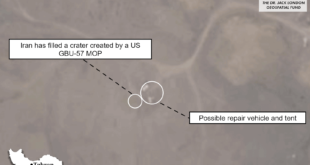A central theme of the 2017 U.S. National Security Strategy is the “growing political, economic, and military competitions” that the United States faces, including with Russia. Russia’s annexation of Crimea made it clear how far Moscow would go to advance its interests, including redrawing internationally recognized borders. This Perspective presents key aspects from past RAND Corporation research on this competition between Russia and the United States.
The author presents key findings and themes from RAND research since 2015 on the strategic competition between Russia and the United States. The author highlights nine major findings: (1) The U.S.-Russia strategic competition likely will be long-lasting; (2) states “in between” Russia and the North Atlantic Treaty Organization are at the center of this competition; (3) conventional war is unlikely (but the United States should still prepare for it); (4) Russian hostile actions below the threshold of war will likely continue; (5) Russia’s achievements in this competition are limited; (6) the United States could diminish its advantage by implementing the wrong policies; (7) engagement remains possible and desirable; (8) the United States can help allies and partners address gray zone threats; and (9) allies and partners can help the United States prevail.
These findings and themes suggest several topics for further research, such as vulnerabilities in non–North Atlantic Treaty Organization countries located in Russia’s periphery; Baltic states’ military and civilian capability gaps; deterrence dynamics; the military, political, social, and economic vulnerabilities of U.S. allies and partners; and the fault lines between U.S. adversaries—specifically between Russia and China.
 Eurasia Press & News
Eurasia Press & News



